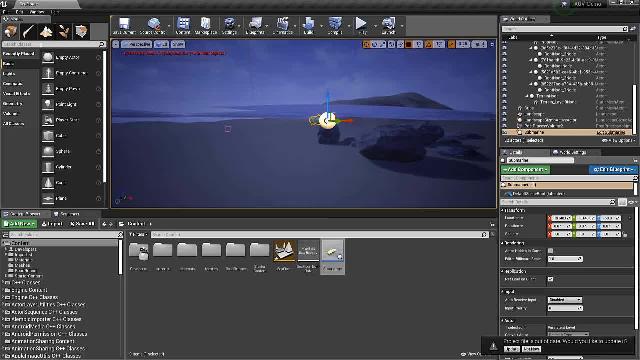Design and Analyze Acoustic Communication Channel Propagation and Modulation Schemes | AUV Deep Dive, Part 5
From the series: AUV Deep Dive
A common design problem is how to lay out a communication network for consistent connectivity with an underwater vehicle. This video first showcases an app designed in MATLAB® you can use to estimate the communication range and data loss rate based on the specifications of a communication buoy. Then you’ll see how you can use a Simulink model to improve data transmission performance with various modulation schemes.
Published: 30 Apr 2021
So right now, now we have an understanding about this mission where we want to have this AUV search the whole area for black box. We want to make sure we have constant connection, wireless connection, with this AUV. And for this wireless connection, we are going to use hydrophones. Those are basically buoys on the surface, and each one of them can establish acoustic communication with the underwater vehicle.
I just got those specs for these hydrophones. How do we use those specs, those information about those hydrophones, to design the optimal number and placement of those hydrophones so we can provide a good coverage for this mission?
Great question, You. So here I would recommend our phased array toolbox. Our phased array toolbox can let you design your propagation channel. You can specify where the position and velocity of your transmitter and receiver. The velocity, it can be stationary, and we can also put in each of the parameters for your transmitters and receivers, such as the operating frequency, the sensitivity, the gain, the noise figure. And once you have all these put, you can run this really easy app to estimate your connection stability.
So as soon as you run the app, it's going to take into account the parameters for your transmitter and receiver and it's going to give you a noise profile which showcases what your signal to noise ratio would be based on the distance between your transmitter and receiver. You can use this to actually build a coverage map or a confidence region around the region you're going to inspect.
So here, I've specified I want three hydrophones that are separated by a distance of 50 meters. And once I hit Confidence Region, you can see that if I were to keep my hydrophone about 50 meters apart and I have three hydrophones, this is the coverage map I receive. This makes it really easy to assess, based on where you're going to search, how far you need to keep your coverage map, your buoys, to make sure you have coverage in the entire region.
Thanks, Ronal. This app you built is very nice, and if we want to improve our coverage, our communications ability, reduce our communication error rate, data loss rate, even further, how can we do that? Is there a way to model those communication effects as well as the hydrophone and see what are the areas of improvement we can do?
Yes, we can. So as I mentioned, this app actually just models the propagation channel and looks at what our losses are within the propagation channel. If you want to take it a step further, we can actually build an entire decoding and encoding scheme so that we can get a better bit error rate.
So here, the first thing I want to show you is our propagation channel. That's what we used to build our app. But let's step back a little and let's look at the rest of our encoding and decoding methods that we can use. So here, I use our communications toolbox to add a channel encoding, an error reduction, and a modulation scheme.
So I'm able to send a random 11 bits through a hamming encoder, where there are multiple different encoders that you can use out of the box, and through a modulation scheme, I'm using the rectangular 8-QAM, but there are other ones that you can use. And once I send it through this, I propagate that message through a white Gaussian noise channel.
Instead, you can actually use the multipack channel that I created for the app, which uses the phased array toolbox. Now, once you've sent the message through the channel, you can, of course, decode this message using our demodulator and our decoder and receive the entire signal back.
This way, you can confirm that if your channel has a lot of noises and you want additional encoding and decoding to get the bit error rate that you want, you can use our communication toolbox to build that overall model.
That's very nice. This actually helps us evaluate if we can improve those electronics' functions to get a hydrophone to perform even better.
That's correct.
Thank you, Ronal.

